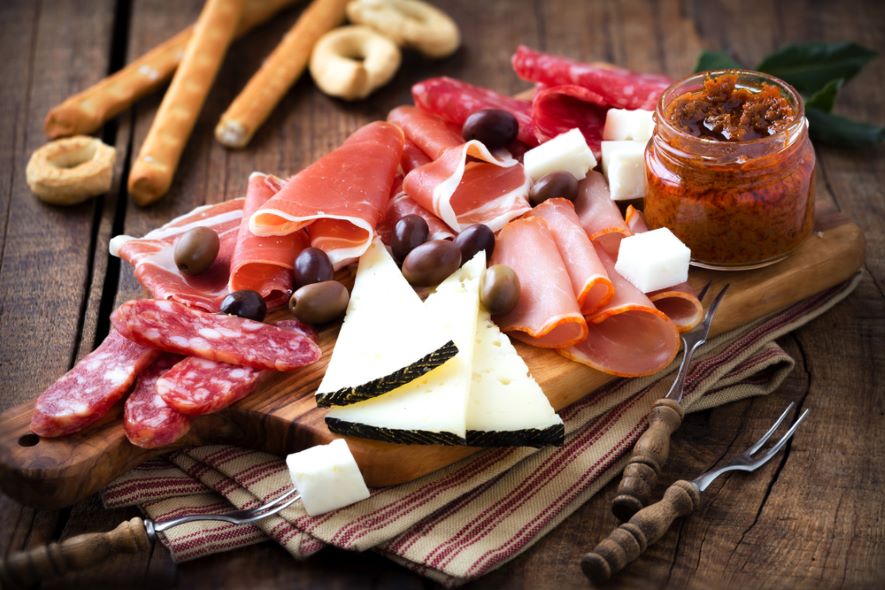Eating tapas on a sunny weekend day has become a tried-and-tested way to delve into the richness and diversity of Spanish delicacies, especially for urbanite foodies eager to widen their gastronomic horizons.
However, it’s time to acknowledge a harsh truth that might surprise you: any similarities between the tapas we eat in the U.S. and the real thing are purely coincidental. That’s right, the original tapas that people still enjoy daily in Spain are completely different from the luscious but sadly inauthentic morsels we consume on this side of the Atlantic. After all, in the U.S. it’s common to use the word “tapas” as a generic synonym of “food from Spain.” But tapas are much more than that, not only in their specific ingredients, but, most importantly, in the overall approach and idiosyncrasies of their consumption.
In celebration of World Tapas Day — third Thursday of June — here’s a guide to help you put a lid (don’t worry, you’ll get this pun in a moment) on common misconceptions surrounding this iconic appetizer so you know what to expect if you decide to plan a tapas tour of Spain.
¡Buen provecho!
History Lesson: Cover That Glass!

First things first: tapa means, literally, “lid.” Odd, right? So, what does a small piece of food have to do with something you use to cover things? The story behind this piece of Spanish trivia is quite interesting.
Legend has it that King Alfonso XIII of Spain was visiting a humble tavern in Cádiz, where he ordered a glass of Jerez (sherry). But then, something unexpected happened. To this day, it’s unclear if it was a few grains of sand flying through the wind — it’s a beach destination, after all — or an inconvenient fly, but something was about to get inside the glass, ruining some perfectly good wine. Thinking fast, the creative owner of the venue acted quickly and covered the glass with a piece of ham. The king was so pleased and entertained by the ingenious idea that he ordered another drink, this time with a “tapa” of ham on it! That’s why Spanish ham is usually the most common tapa you will get. It’s tradition.
An alternate version of the story states that it was actually an antecessor, Alfonso X of Castile, who created this concept at some point in the 13th century after determining that food helps alleviate the intoxicating effects of alcohol. No wonder he was known as The Wise!
Free Food? Sí, siempre.

In the U.S., we typically view tapas as small-portioned but overpriced Spanish food. This is truly ironic, since tapas traditionally are free! Typically, tapas don’t constitute a meal, but are meant as a courtesy offered in most bars and pubs in Spain. You can also get them in some restaurants, too, but it’s not a given. Anyway, the important concept here is that, in Spain, they don’t cost a thing.
Tapas are a cultural sample, a small something to entice your thirst and to thank you for your patronage. In most cases, they are also represent a unique trademark for the bar or restaurant you’re patronizing, something that distinguishes a really good place from one that’s just meh. Here’s how it typically works: the more drinks you order, the more tapas you get. Their quality and abundance will greatly vary depending on the place, but really good bars usually improve these both factors accordingly the more drinks you buy. Sometimes you can even get a free meal out of it, just by drinking!
To sum it up, in Spain, tapas are always free. If you paid for them, then they aren’t tapas. Those amazing dishes with octopus and alioli sauce you had in San Sebastián and Bilbao are pintxos, and they usually don’t come cheap — totally worth it, though! Or maybe you just ordered regular Spanish food in the form of raciones (that is, rations). As a rule of thumb, if you asked for a beer and got it with a complimentary side of manchego, that’s your tapa right there.
Try Different Tapas in Different Regions

Lastly, it’s important to know that, when it comes to tapas, the sky is the limit. Tapas can consist of literally anything the waiter decides to treat you with. That being said, there are classic choices that you’ll find everywhere: cheese and ham slices, Russian salad, Spanish omelets and croquetas, even chicken wings and cheeseburgers. These are all definitely fan favorites. In some of the less fancy places, you might also receive potato chips and peanuts.
There are regions where you can even choose which tapa you want. In the Salamanca province, for example, it’s possible to pick a side of meat as a legit tapa. Yes, completely free. Be careful, though: not all regions in Spain are on board with the whole tapas thing. In some parts of Catalonia, for example, you’ll have to pay for them, which sort of goes against the whole purpose of tapas in the first place.
If you’re looking for tapas in Spain, be ready for a bar crawl. Madrid is an awesome place to try, thanks to the endless number of bars and pubs you will find in the old city. (Local tip: check out the Madrid de los Austrias neighborhood, which surrounds landmarks like Puerta del Sol and Plaza Mayor, to experience the real deal.) And, of course, Andalucía is another great option due to the superb quality of its fish and seafood!
FAQs:
Q: What is the proper etiquette when ordering tapas in Spain?
A: When ordering tapas in Spain, it’s customary to start with a drink; the tapas will follow as a complimentary item. It’s polite to consume tapas while standing at the bar, and you may move on to other bars after one or two drinks to explore different tapas.
Q: Are reservations required for tapas bars in Spain?
A: Typically, no reservations are needed for tapas bars, as they are casual venues. However, if you plan to visit a particularly popular spot or go with a large group, calling ahead may be advisable.
Q: Can dietary restrictions be accommodated with tapas?
A: While tapas are diverse, not all establishments may cater to specific dietary needs. It’s best to ask the server if the establishment can accommodate restrictions like food allergies, or provide vegetarian, vegan, or gluten-free options.
Q: What is the difference between tapas and raciones?
A: Tapas are small, complimentary appetizers served with drinks, while raciones are larger portions of Spanish dishes that you pay for and are meant to be shared among the table.
Q: Is tipping expected at tapas bars in Spain?
A: Tipping isn’t mandatory in Spain, but it’s appreciated. A small tip or rounding up the bill at a tapas bar is a kind way to show appreciation for good service.
Q: How do I navigate a tapas bar if I don’t speak Spanish?
A: Many tapas bars have menus with pictures or English translations. You can also point to what others are having or ask for the server’s recommendation by saying “Recomienda algo?” which means “Recommend something?”
Q: What times are tapas typically served in Spain?
A: Tapas are usually served during traditional Spanish meal times, which are later than in many countries: lunch around 2 pm to 4 pm and dinner from 9 pm to midnight. However, many bars will serve tapas throughout the day.
Do you know any great place to eat tapas in Spain or abroad? Let us know in our comments section below!


Leave a Reply